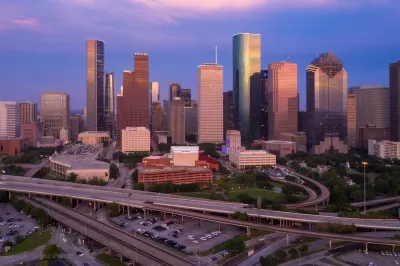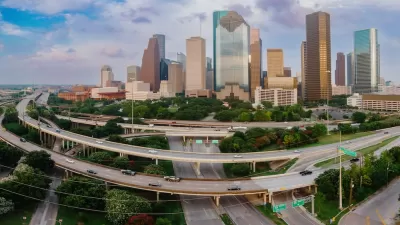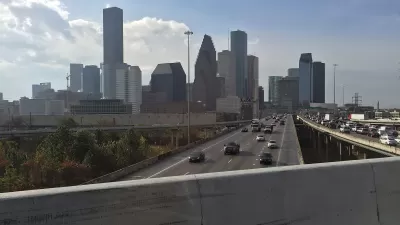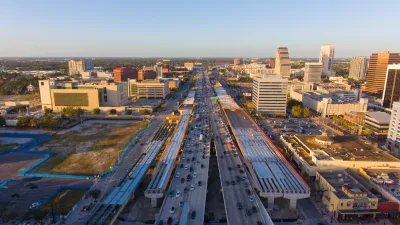Opportunities abound for Houston to capitalize on otherwise unused space beneath its wide network of freeways.

With the numerous wide freeways throughout the City of Houston, it's becoming more apparent that the space beneath the many overpasses can, and should, be made multifunctional. In cities like Houston where space is limited, these spaces can be reimagined to provide shade, shelter from rain, and safe under-crossings for pedestrians and cyclists. Even adding simple interventions such as lighting or a splash of color to the environment can help make space underneath freeways more attractive and safer.
As Dug Begley explains in a Houston Chronicle article, public officials are engaging with communities to get a better understanding of how these spaces can best benefit the surrounding neighborhoods and residents. Options include parking, trails, vegetation, stormwater detention, and programmed park space.
The article highlights the importance of minimizing unused or wasted space. Communities within the U.S. and around the globe have already started repurposing beneath freeway spaces for a wide variety of uses including recreation, public art, and playgrounds. With a changing climate that is making summers increasingly hotter, these spaces represent prime opportunities to take advantage of already shaded areas. Engaging with communities to reimagine these spaces can also signify a step in building trust with the surrounding communities, some of which may have been disproportionately impacted by the presence of the freeways. Even with minimal intervention, programming, and maintenance, these under-crossings can show subtle “cues to care” that will increase the perception of safety and signify investment. Houston, as well as other communities strapped for space, should continue to take advantage of the many benefits and options that these unique places can provide.
FULL STORY: Houston has a ton of freeways. And a big opportunity to reimagine the space underneath them.

Planetizen Federal Action Tracker
A weekly monitor of how Trump’s orders and actions are impacting planners and planning in America.

Congressman Proposes Bill to Rename DC Metro “Trump Train”
The Make Autorail Great Again Act would withhold federal funding to the system until the Washington Metropolitan Area Transit Authority (WMATA), rebrands as the Washington Metropolitan Authority for Greater Access (WMAGA).

The Simple Legislative Tool Transforming Vacant Downtowns
In California, Michigan and Georgia, an easy win is bringing dollars — and delight — back to city centers.

The States Losing Rural Delivery Rooms at an Alarming Pace
In some states, as few as 9% of rural hospitals still deliver babies. As a result, rising pre-term births, no adequate pre-term care and harrowing close calls are a growing reality.

The Small South Asian Republic Going all in on EVs
Thanks to one simple policy change less than five years ago, 65% of new cars in this Himalayan country are now electric.

DC Backpedals on Bike Lane Protection, Swaps Barriers for Paint
Citing aesthetic concerns, the city is removing the concrete barriers and flexposts that once separated Arizona Avenue cyclists from motor vehicles.
Urban Design for Planners 1: Software Tools
This six-course series explores essential urban design concepts using open source software and equips planners with the tools they need to participate fully in the urban design process.
Planning for Universal Design
Learn the tools for implementing Universal Design in planning regulations.
Smith Gee Studio
City of Charlotte
City of Camden Redevelopment Agency
City of Astoria
Transportation Research & Education Center (TREC) at Portland State University
US High Speed Rail Association
City of Camden Redevelopment Agency
Municipality of Princeton (NJ)





























